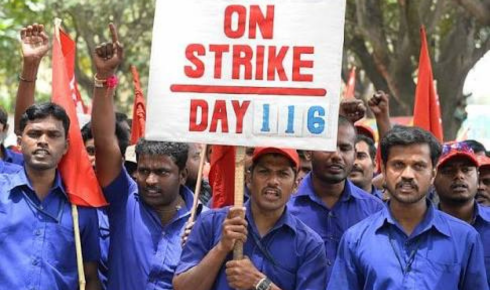In industrial relations, disputes often arise between employers and employees, and two common terms linked with such conflicts are strike and lockout. Employers must understand the difference between lockout and strike as these actions directly affect production, operations, and compliance responsibilities. Another important provision is Section 25F of Industrial Dispute Act, which outlines conditions that management must follow in cases of retrenchment.
Strike and Lockout Explained
A strike happens when employees collectively stop working to press for demands such as better wages or working conditions. On the other hand, a lockout occurs when the employer temporarily closes the workplace or refuses to allow employees to work, usually as a counter-response to labour unrest. While strikes disrupt business from the employee side, lockouts are initiated by the employer to protect business interests and exert control over escalating disputes.
Difference Between Lockout and Strike
A lockout and a strike are distinguished by the party initiating the action. Employees initiate strikes, while employers impose lockouts. Strikes may cause loss of productivity and delayed delivery schedules, while employers can use lockouts strategically to prevent disorder and maintain authority in a conflict situation. For businesses, knowing this distinction is important because both actions have different legal consequences under the Industrial Disputes Act.
Section 25F of Industrial Dispute Act
Section 25F of Industrial Dispute Act deals specifically with the conditions of retrenchment for workmen. Under this section, employers are required to provide at least one month’s notice, or payment in lieu of notice, in addition to compensation equal to 15 days of average pay for each year of continuous service completed.
Why Employers Must Stay Informed
For employers and top management, staying updated on provisions related to strike, lockout, and retrenchment is not just about compliance, it is about business continuity. A lack of knowledge can lead to legal disputes, financial losses, and reputational damage. Understanding these aspects enables management to take preventive measures, develop effective dispute resolution strategies, and protect organisational interests.
Conclusion
Industrial disputes are a common reality in many sectors, but proactive management can help mitigate disruptions. By understanding strike and lockout, the difference between lockout and strike, and the rules under Section 25F of Industrial Dispute Act, employers can maintain compliance and reduce risks. Awareness and preparedness enable businesses to handle conflicts efficiently and protect long-term growth.

